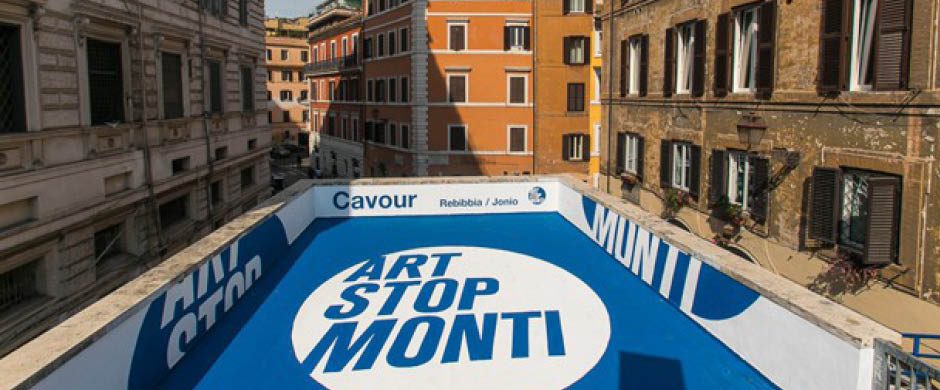Living a subway station not only as a fast passageway but also as a place “to stay”: from this kind of idea is born the Art Stop Monti initiative, created by ATAC (the Roman public transport company) and Nu Factory, with the aim of opening some of the Cavour metro station (line B) spaces to the creativity of under 30 artists. The open call, that ended a few days ago, had as target the organization of a temporary exhibition (to be realized in an unusual place – but highly frequented – as a metro station) to give visibility to the young national and international artistic excellences, creating an opportunity useful as a showcase for new talents. Each participant was asked to reflect on the “station” environment and to carry out a work related to the matters of the subway, the city of Rome or the shared urban space and the winners’ pieces will be shifted to the station every two months, starting in June.
///
Vivere una stazione metropolitana non solo come luogo protagonista di un veloce passaggio ma anche come posto dove “sostare”: da quest’idea nasce l’iniziativa Art Stop Monti, realizzata da ATAC (l’azienda del trasporto pubblico romano) e Nu Factory, con l’obiettivo di aprire alcuni spazi della fermata Cavour (linea B) alla creatività di artisti under 30. L’open call conclusasi pochi giorni fa ha avuto come finalità un’esposizione temporanea (da realizzare in un luogo inusuale ma altamente frequentato come una stazione metropolitana) volta a dare visibilità alle giovani eccellenze artistiche nazionali ed internazionali, creando così un’occasione che funga da vetrina per i nuovi talenti. Ad ogni partecipante è stato chiesto di riflettere sull’ambiente “stazione” e di realizzare un lavoro connesso a tematiche inerenti la metropolitana, la città di Roma o lo spazio urbano condiviso e i lavori vincitori si avvicenderanno nella stazione con una scadenza bimestrale, a partire dal mese di giugno.
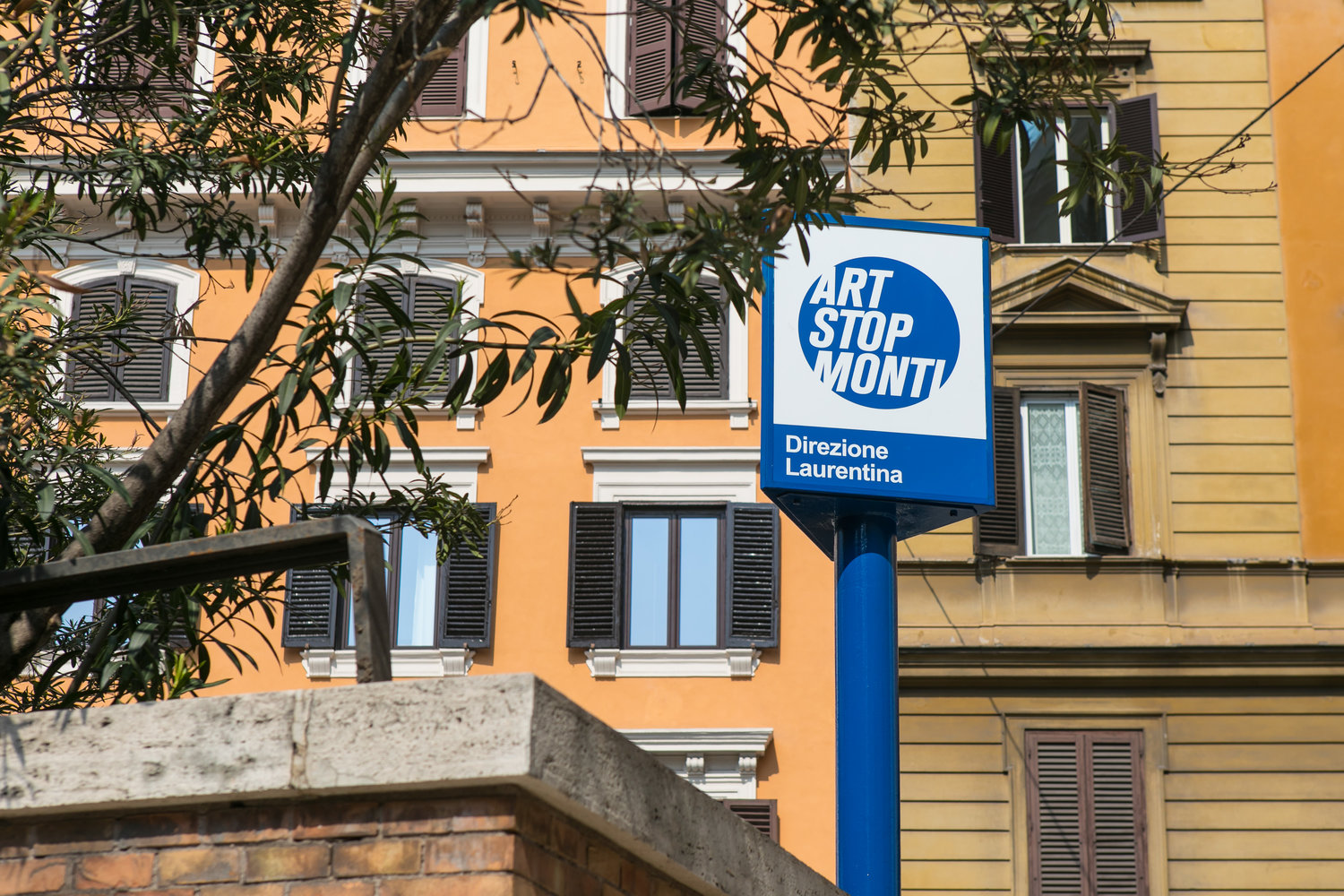
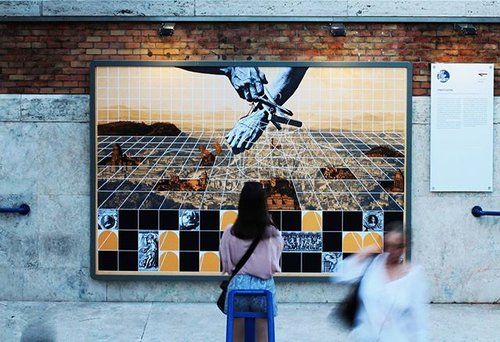
The 6 selected works will be featured on two billboards that will turn into ideal temporary frames. Among the winners there is “Stratificazione” (stratification), performed by young artists Massimiliano Cafagna, Pasquale Iaconantonio, Sebastiano Marini and Vincenzo Guarini, with the collaboration of the young archaeologist Elvira Vitulano ; the aim is to represent the city of Rome, its subsoil as the outcome of a process of the historical millennial stratification characterized by a series of different phenomena linked to cultural events, artistic experiences, individual memories that find complete synthesis in the contemporary community.
///
I 6 lavori selezionati verranno esposti su due billboards che si trasformeranno in ideali cornici temporanee. Fra le vincitrici troviamo “Stratificazione”, opera realizzata dai giovani artisti Massimiliano Cafagna, Pasquale Iaconantonio, Sebastiano Marini e Vincenzo Guarini con la collaborazione della giovane archeologa Elvira Vitulano, che si pone l’obiettivo di rappresentare la città di Roma, il suo sottosuolo, come l’esito di un processo di stratificazione storica millenaria caratterizzata da una serie di fenomeni differenti legati a fatti culturali, ad esperienze artistiche, a memorie individuali che trovano compiuta sintesi nella comunità contemporanea.
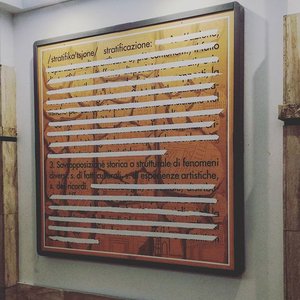
To find out more we met Vincenzo Guarini, architect and an Archistart friend, to ask few questions to him.
Fabrizio: “Hi Vincenzo, welcome. Are you satisfied about the final result?”
Vincenzo: “Hello Fabrizio. Yes, we are very happy. Walking along Cavour station and see our work exposed is a great satisfaction for us.”
F .: “Tell us something about your work. What was the ideal engine that led you during the “genesis” of Stratificazione?”
V .: “The instrument that we used to investigate the various overlays represented in Stratificazione, analyzed in the various temporal segments, is undoubtedly the archaeological practice, which has the merit of revealing uninterrupted secular evidence. In order to achieve this, the city’s natural shape with its peculiar conformations is involved, but also the architectural science becomes a historical discipline that here is called to contaminate its theories with archaeological methods, in a recurrent exchange between progress and knowledge.”
- “Did your architectural formation contribute to this process?”
V: “Probably yes. The action of the architect, who usually is present in order to develop spaces, becomes in Rome the conjunction between past and present, in a continuous alternation of an “above / below” movement of the dialogue between diachronicity and synchrony that, almost paradoxically, it aims at an innovative future. In Layering there is a synthesis of all this, especially if one thinks of the Roman romance between archeology and the subway.”
- “Yes, Rome is a really troublesome city and full of fascinating contradictions, which I usually compare to a woman as much beautiful as problematic. Even these considerations about the problems that afflict the city have influenced your idea? “
A: “In this city, known to be often paralyzed, innovation must be synonymous of “freedom of movement”. It is in the intersection of this principle that there is the design of a subway, a mass transit system for urban services.”
F .: “Tell me more.”
V .: “The work is intrinsically an ideal invasion of the contemporary world and of its modern infrastructures, situated in the unexplored subsoil; that’s the most direct contact between two realities, the community for the community.”
F .: “The representation of these ideas is very clear in Stratificazione. Has it been difficult to turn this concept graphically into art?”
A: We have decided to represent the last layer (describing the morphology of the physical, cultural, architectural and archaeological components of the contemporary city) as a transparent fabric texture, representing the depositing portion of the new urban accumulation of the future. What is really clear to everyone (and intervenes on the reality) is that the city needs a conscious recovery of the underground state, resulting in an overlapping process from a ‘trend’ not always predictable but still addressable.”
///
Per saperne di più abbiamo incontrato Vincenzo Guarini, architetto ed amico di Archistart, per porgli qualche domanda.
Fabrizio: “Ciao Vincenzo, benvenuto. Soddisfatti del risultato?”
Vincenzo: “Ciao Fabrizio. Sì, siamo molto contenti. Passare a Cavour e vedere esposta Stratificazione è una bella soddisfazione per noi.”
F.: “Raccontaci qualcosa riguardo la vostra opera. Qual è stato il filo conduttore ed il motore ideale che vi ha condotti nella genesi di Stratificazione?
V.: “Il mezzo che abbiamo utilizzato per indagare le varie sovrapposizioni rappresentati in Stratificazione, analizzate nei vari segmenti temporali, è senza dubbio quello della prassi archeologica, la quale ha il merito di svelare testimonianze secolari ininterrotte. Per raggiungere questo fine interviene la naturale predisposizione della città, dalle conformazioni così peculiari, ma anche la scienza architettonica che si fa disciplina storica che qui viene chiamata a contaminare i suoi teoremi con le metodologie archeologiche, in uno scambio ricorrente tra progresso e conoscenza.”
F.: “La tua formazione da architetto ha contribuito a questo processo?”
V.: “Probabilmente sì. L’azione dell’architetto che, di solito, interviene per plasmare lo spazio diventa a Roma l’anello di congiunzione tra passato e presente, in una continua alternanza del movimento “sopra/sotto”, di dialogo tra diacronia e sincronia che, quasi paradossalmente, mira però ad un futuro innovativo. In Stratificazione c’è una sintesi di tutto questo, soprattutto se si pensa all’idiosincrasia tutta romana fra archeologia e metropolitana.”
F.: ”Già, Roma è una città davvero difficile e ricca di affascinanti contraddizioni, che io sono solito paragonare ad una donna tanto bella quanto problematica. Anche queste considerazioni sui problemi che affliggono la città hanno influito sulla vostra idea?”
V.: “In questa città, notoriamente spesso paralizzata, innovazione deve essere sinonimo di “libertà di movimento”. E’ negli interstizi di questo principio che si inserisce il progetto della metropolitana, di trasporto rapido di massa destinato a servizi urbani.”
F.: “Ovvero?”
V.: “Nell’opera è intrinseca un’invasione ideale del mondo contemporaneo, delle sue moderne infrastrutture nei cunicoli spesso inesplorati del sottosuolo; è il contatto più diretto tra due realtà, della comunità per la comunità.”
F.: “La rappresentazione di questi concetti è molto chiara in Stratificazione. E’ stato difficile trasformare graficamente in arte questo concept?”
V: “Abbiamo deciso di rappresentare lo strato ultimo, corrispondente alla morfologia delle componenti fisiche, culturali, architettoniche e archeologiche della città contemporanea, come una trama di tessuto trasparente che rappresenta la quota di deposito del nuovo accumulo urbano del futuro. Ciò che è sotto gli occhi di tutti, che interviene sulla “faccia a vista” presuppone un recupero consapevole dello stato sotterraneo, esito a sua volta di un processo di sovrapposizione, dall’andamento non sempre prevedibile ma comunque indirizzabile.”
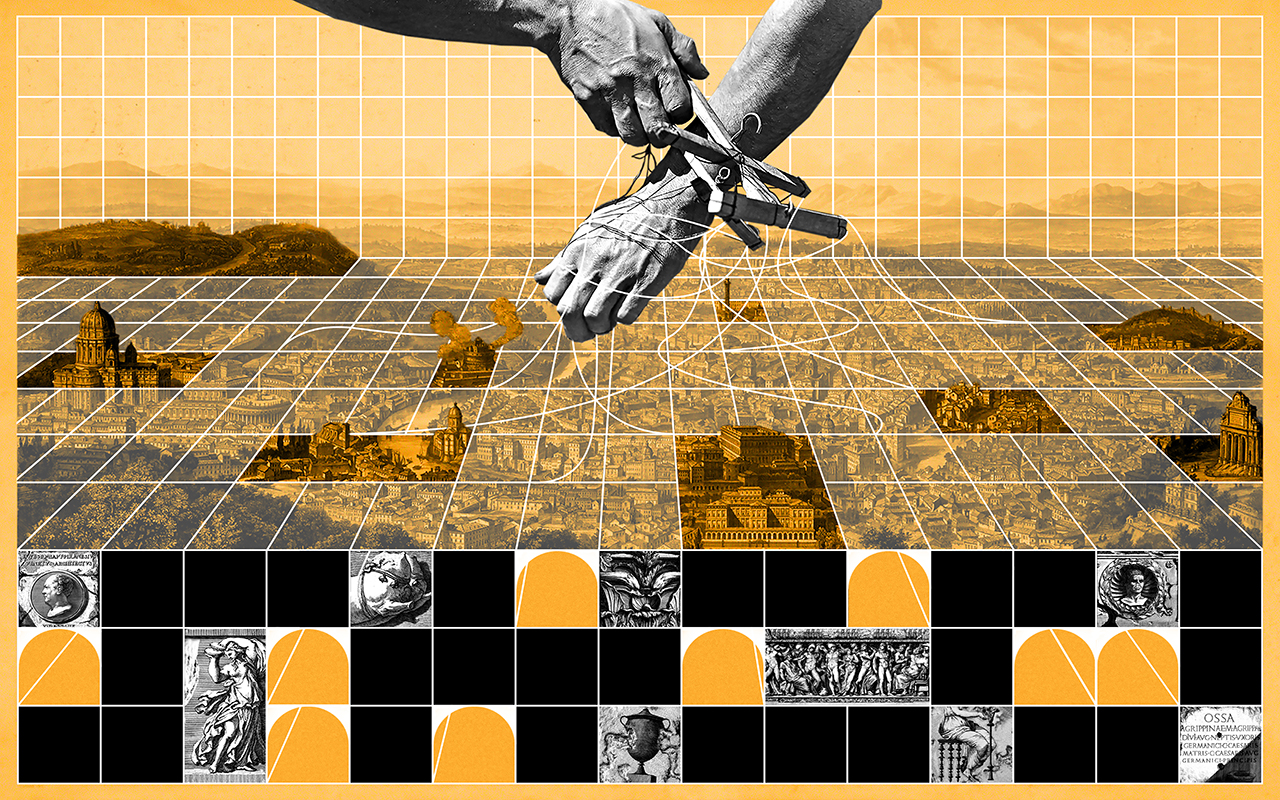
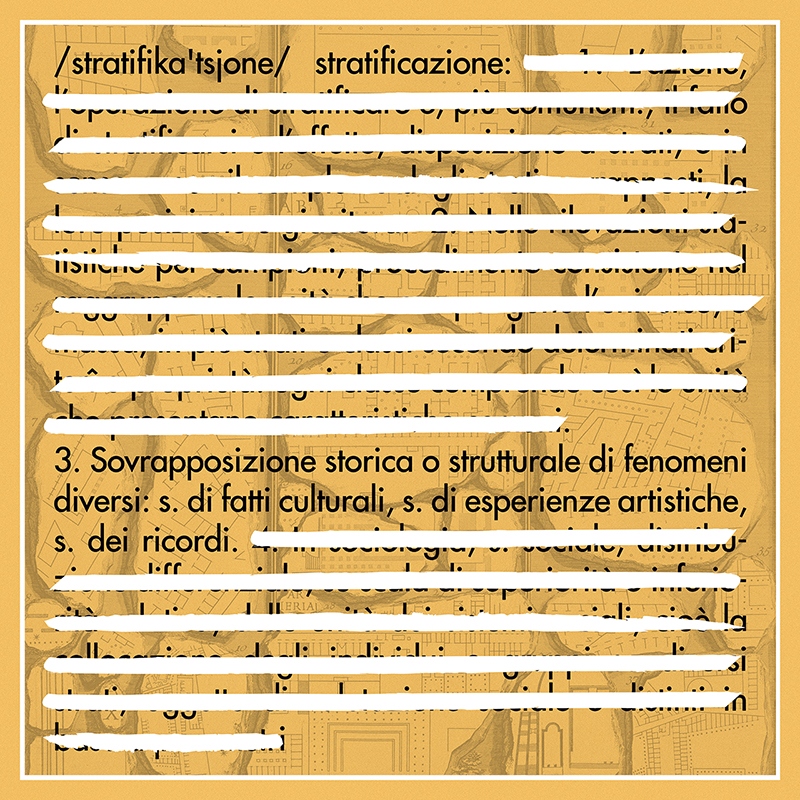
Cover image courtesy of Repubblica.it

